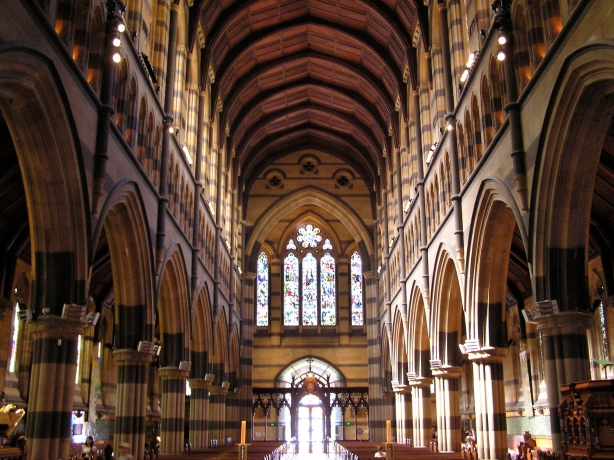 In the two previous articles (Pt. 1 and Pt. 2) on this subject we considered the human response of the church when an individual who is evidently an unbeliever and who does not conform to the standard dress, behavior, and etiquette codes of society comes into a service. I have also added a little side bar of ground rules in defense of the church (we are not to leave the church open for a free for all). Keeping these ground rules in mind, we are to understand that the Lord has designed the activities of His church in corporate worship in such a way that what we do in worship is a testimony to who He is. It sets forth the nature of Christianity and is a witness to the world.
In the two previous articles (Pt. 1 and Pt. 2) on this subject we considered the human response of the church when an individual who is evidently an unbeliever and who does not conform to the standard dress, behavior, and etiquette codes of society comes into a service. I have also added a little side bar of ground rules in defense of the church (we are not to leave the church open for a free for all). Keeping these ground rules in mind, we are to understand that the Lord has designed the activities of His church in corporate worship in such a way that what we do in worship is a testimony to who He is. It sets forth the nature of Christianity and is a witness to the world.
Modern worship is a makeshift, pragmatic operation brought together by whoever is at hand to play a part because it so often has to please an ad hoc congregation. New Testament worship, on the other hand, is deliberate and organized, and it is that way for a very definite purpose—it says something about the God being worshiped. As the New Testament church grew and developed, many symbolic features were incorporated in every aspect of the church—from the liturgy to the building itself—that were intended to say something about the One being worshiped. The ancient basilica-shaped buildings were modeled after Roman courts of justice to signify that whatever injustice may be on the earth, this is the house of the Judge of all the earth. The pillars of great churches, the nave (ship), the vaulted ceilings (signifying the hull), the number of windows and the direction they faced, and the many symbols on stained glass in the great cathedrals of the world all had biblical significance.
While this was well intentioned by men who wanted to pack as much meaning into worship as possible, it is now the stuff of history books and tourism. Much of it has been discarded in the process of time, and we need not return to it because, good as it was, it was of human invention. There are certain aspects of worship, however, that we should not relinquish to the history books. How we practice worship was designed by God for a purpose; there is a message not only in the sermon but also in the way we worship. Should visitors who are ignorant of the gospel or of the biblical manner of worship come into the worship service, they ought to be instructed by what they see as well as what they hear.
Many on the fringes of society feel disenfranchised or disconnected from those around them. But when an unbeliever walks into the church of Christ, she should see diversity in the congregation united in love to One Saviour. She should see age-integrated and class-integrated worship, where the old teach the young and the young submit to the old, where social status or employment does not matter, where the employee and the employer can meet on level ground and worship in harmony. She should see in the prayer (led by one man), in the songs sung collectively, and in the congregational attention to a pastor preaching out of one Book that Christianity is united in its object and purpose—it is Christ-centered. She should see the gospel in the symbolism, instruction, and activity of evangelical Christianity:
- The Communion Table points to communion with God through the once-for-all-time sacrifice of Christ. The altar is done away with. (See the article “Altar or Communion Table?”)
- The selfless submission of the believer to Christ is seen in ladies’ wearing of head coverings and in men’s not having their heads covered.
- The joy of the Lord in seen in the singing of Psalms and hymns.
- The thankfulness of the Christian is seen in the act of offering up our livelihood to Him in our tithes and offerings.
- The focus on biblical instruction is seen in that the pastor is called, prepared, and ordained by God for the purpose of feeding the flock and guiding in the house of God.
To summarize, what our worship looks like is important, and every Christian should be aware of how he worships and what it says to the unbeliever who may be observing. The meeting of the saints on the Lord’s Day is not only an act of divine worship, it is an exercise in mutual sanctification, and it is, furthermore, a method of evangelizing the lost. It is true that the entrance of the Word gives light, but how that Word is presented is significant. There may be a place for presenting the Word in song, in drama, in poetry, and in story-telling, but the Bible makes it clear that the Lord is pleased to save sinners by the “foolishness of preaching” (1 Corinthians 1:21). Let the church return to biblical methods and watch the Lord honor His Word in the salvation of sinners and the growth of the church.

Leave A Comment